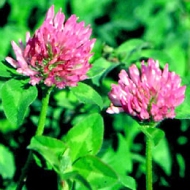
Red clover
| Name: | Red Clover (Trifolium pratense) |
||||||||||||||||||||||||||||||||||||||||||||||||||||||
|---|---|---|---|---|---|---|---|---|---|---|---|---|---|---|---|---|---|---|---|---|---|---|---|---|---|---|---|---|---|---|---|---|---|---|---|---|---|---|---|---|---|---|---|---|---|---|---|---|---|---|---|---|---|---|---|
| Description: | A short-term (2–3 years) perennial legume. Most growth occurs in summer and autumn. Best suited to well-drained, fertile, slightly acid to neutral soils. Suited to high rainfall with a good proportion of it during summer. Performs best in cool coastal and tablelands areas. Some varieties also used in irrigated pasture mixtures. Susceptible to root rot. Sow in autumn or spring (irrigation/tablelands). Inoculant Group B. |
||||||||||||||||||||||||||||||||||||||||||||||||||||||
| Sowing rate: | 1-4 kg/ha. |
||||||||||||||||||||||||||||||||||||||||||||||||||||||
| Minimum average, annual rainfall: |
700 mm in the Southern NSW to 800 mm in Northern NSW. |
||||||||||||||||||||||||||||||||||||||||||||||||||||||
| Select varieties on the basis of: | Oestrogen level: Oestrogen can adversely affect performance of breeding stock. (Red clover oestrogen is used in the pharmaceutical trade.) Maturity: Earlier types usually provide earlier feed in the spring. Ploidy: Tetraploid types tend to have larger leaves than diploid types Seasonal growth: Select high productivity to match livestock demand – especially winter growth. See local trial data if available. Stoloniferous habit: May assist spread and increase persistence. |
||||||||||||||||||||||||||||||||||||||||||||||||||||||
| Seed available: |
|
||||||||||||||||||||||||||||||||||||||||||||||||||||||


